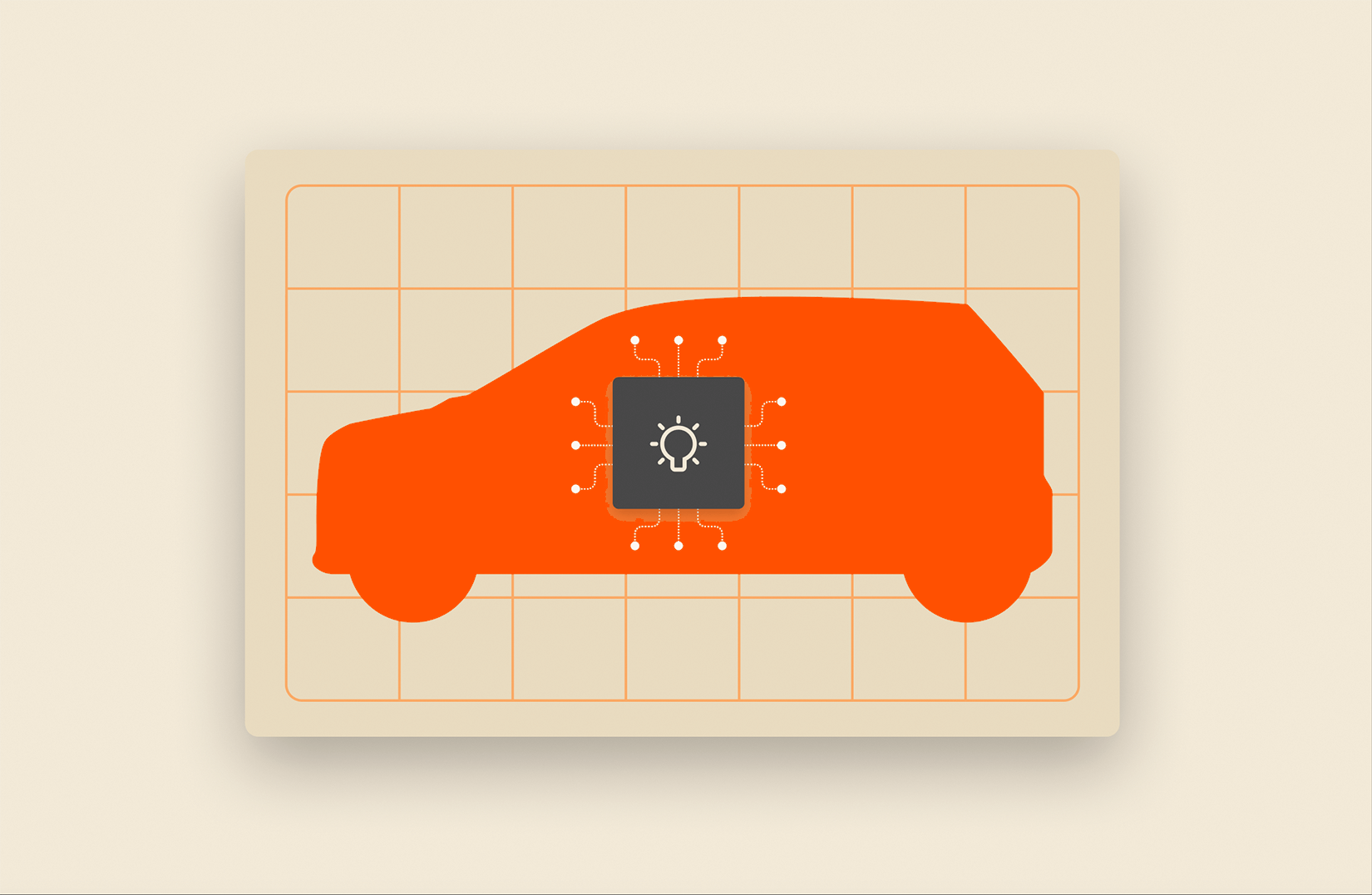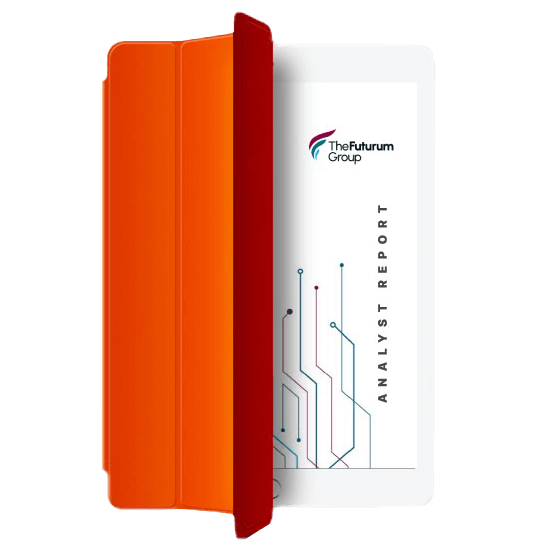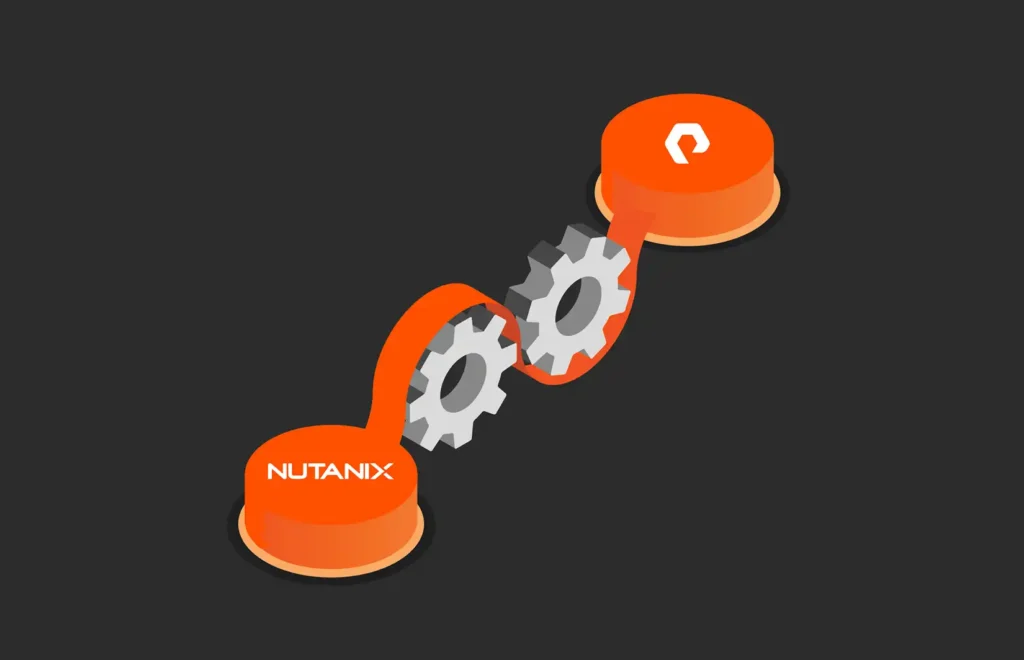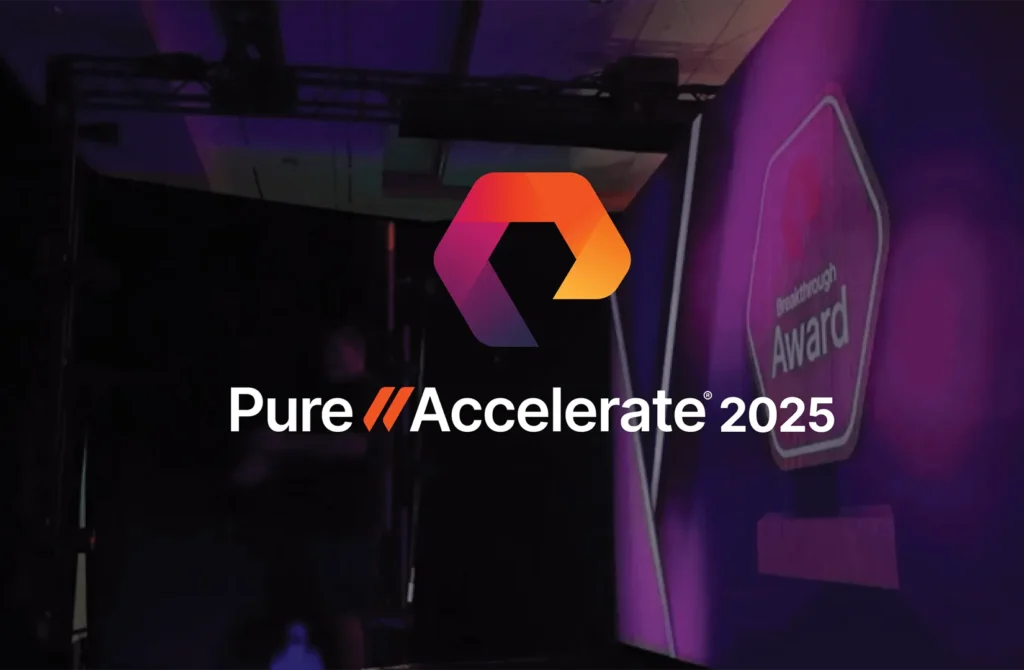Summary
Dive into the two major themes of AutoTech: Detroit 2024—from cars and code and connectivity to over-the-air updates and more.
The 2024 AutoTech: Detroit show was another great look at what’s happening in the rapidly changing world of automotive technology. As expected, there was a major focus on the software-defined vehicle (SDV), including an excellent panel session, “Data as a Service: Unveiling the Road to Data Mastery,” that included Bharath Ram, Business Solutions Strategist at Pure Storage.
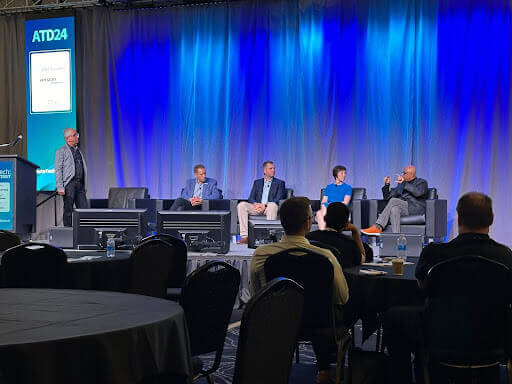
The “Data as a Service” panel, with Bharath Ram (on the far right). Other participants, from left to right, were Moderator Partha Goswami, Principal, PG Mobility Analysis; John Heinlein, CMO, Sonatus; Ryan May, Head of Software, Nikola Motor; and Sue Bai, Chief of Data Business, American Honda Motors.
Moderator Partha Goswami opened the session by noting that predictions about the value of data services to automakers have not met optimistic projections from a few years earlier. Ryan May noted that while “data today is not a huge revenue generator, it’s a huge value generator.”
That indeed is an important distinction, in that automakers get tremendous amounts of data streaming off their vehicles which can lead to better decision-making and future enhancements. Part of the challenge is that data sets often remain siloed. As Ram noted, “Data needs to become a boardroom topic,” not just a software or engineering topic. Because the typical corporate technology stack is going through a massive reimagining (due to AI, containerization, etc.), data strategy needs to be set at a business level first.
Sue Bai took an interestingly human perspective on data saying that it will help automakers understand their customers, “more intimately, to create stronger relationships.” She emphasized that trust will be critical to these relationships.
Looking for New Software Solutions
It’s true that other than entertainment and navigation systems, there have not been a lot of widely deployed software applications for automobiles. One company seeking to change that is Pontosense, which has come up with an interesting AI tool that uses an in-vehicle sensor to monitor human biometrics, including breathing rate, heart rate, and heart rate variability (HRV). One application for this is child presence detection, which can detect a child in the car and alert you if you happen to leave the child behind (don’t do this!).
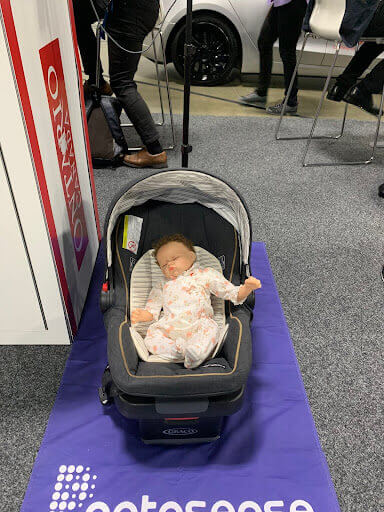
Pontosense demonstrated their technology using a doll with a simulated breathing motion, allowing the sensor to detect it and its precise location in the vehicle.
The same sensor can help with driver monitoring (for alertness, intoxication, etc.), intrusion detection, and even smart airbag deployment. For example, if you’re sitting off-center in your seat, the airbag can be dynamically adjusted to reduce injury risk and increase effectiveness. Will this tech take off? Too soon to tell, but it’s good to see some innovative thinking.
There’s a lot of that going on at AutoTech, as the sizable “Start Up Zone” attests.
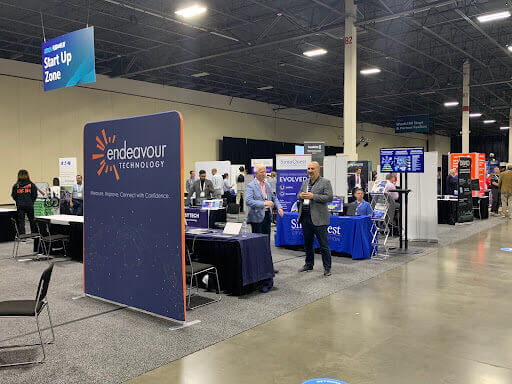
The Start Up Zone was full of innovative new vendors with targeted offerings.
These startups, along with the many software development and AI consulting firms at the show, indicate that the legacy OEMs are seeking solutions and innovative thinking from anywhere they can find it.
One such consulting firm is Luxoft, a division of Pure Storage partner DXC Technology. Luxoft covers many industries, and their automotive practice focuses on SDVs. The company covers many automotive use cases, including digital cockpit, electrification, autonomous driving, user experience, and more. An interesting capability they talk about is the “self-healing automobile” that can be fixed with an over-the-air software update. I highly recommend watching the three-minute video on their blog for a realistic scenario of what is possible when bringing AI together with the SDV.
Cool Car Pics!
If you were wondering when we would get to the cool car pics, the wait is over.
First up is the very cool Pix Robobus, designed for short-distance commutes.
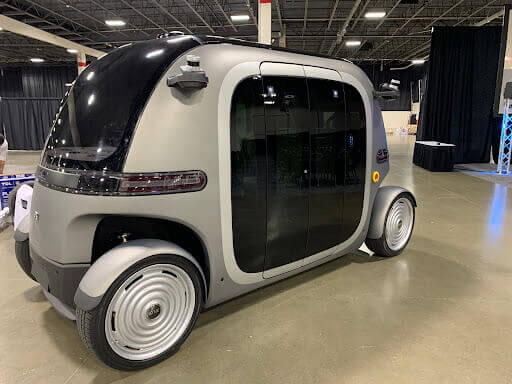
With a highly futuristic design, the Pix Robobus is very eye-catching.
This self-driving vehicle is designed to support multiple use cases, including local commuting, especially to and from train stations for last-mile services. But it can also serve as a mobile retail store, with robots offering services from food to fashion. It can even be a mobile gym, allowing you to work out while the Robobus takes you home.
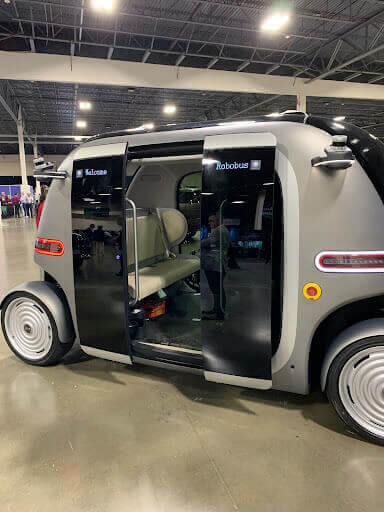
The spacious interior of the Pix Robobus makes it easy for commuters to stand up and stretch or to fill out with other services.
Every year, AutoTech gives out awards for the best car interiors. One winner was the Kia EV9, an all-electric SUV, which was sleek both outside and inside.
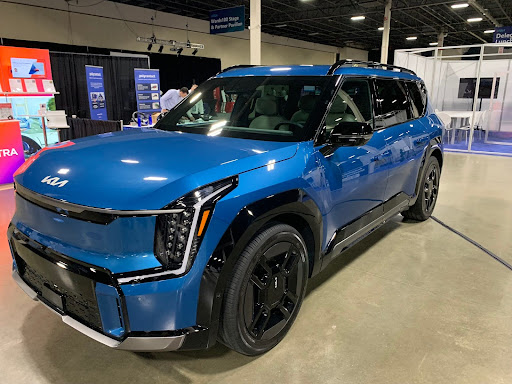
Exterior of the all-electric Kia EV9.
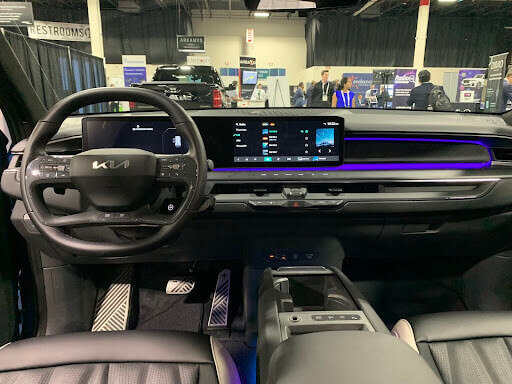
Interior of the Kia EV9.
Another award-winning interior was the Ram 1500 Tungsten, which features an insane 23-speaker sound system and a dashboard that looks more like a jet plane than a car.
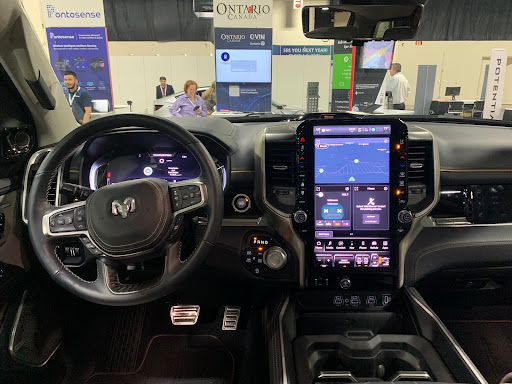
Interior of the Ram 1500 Tungsten.
Finally, the Toyota Grand Highlander Hybrid had what to me was a pretty standard exterior but a luxurious interior with a brown-black-copper color scheme that was one of the classiest looks at the show.
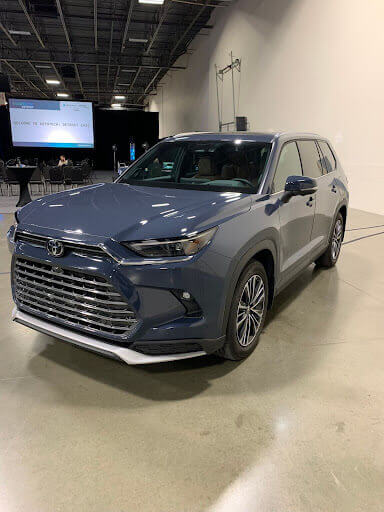
Exterior of the Toyota Grand Highlander Hybrid.
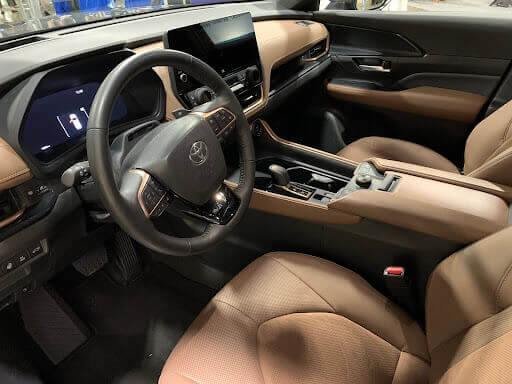
Interior of the Toyota Grand Highlander Hybrid.
And that’s a wrap from AutoTech! It was another great year showcasing innovation and change in the fascinating world of automotive manufacturing. Learn more about Pure Storage automotive solutions.
The Car as Code
The software-defined vehicle is clearly top of mind this year, along with a focus on data. In a recent blog, I covered software-defined vehicles, so I’ll focus on the data side. One of the keynote sessions is titled, “Fuelling the Future: Embracing a Renewed Data Revolution.” Data is quickly becoming the most important aspect of the automotive industry, like every industry. Automakers will need to handle more data than they ever have before, encompassing everything from retail and marketing data to manufacturing to sensor data coming from the cars as they are driven. And then it all has to be pulled together to derive value from it.
The scale of this task is enormous and will certainly stress automakers who rely on monolithic, legacy systems. Most OEMs have already been working toward moving away from siloed database stacks and separate unstructured repositories, but the process is ongoing and SDV developments are pushing up project timelines.
While EV projects are slowing, legacy internal combustion engine vehicles and hybrids are equally impacted by software. And with software comes connectivity.
Over-the-air Updates: The Tech behind ‘Connected Cars‘
Just like last year, the three highest-level sponsors of AutoTech are telecom carriers, specifically AT&T, Verizon, and T-Mobile. Because the software-defined vehicle is nothing without a connection.
The defining feature of the SDV is the over-the-air (OTA) update. The OTA function allows manufacturers to add new features, including paid subscriptions that help to grow revenue. The most noticeable OTA updates are those to infotainment or navigation systems. But vehicles are so software-centric that even hardware problems can be fixed via an OTA, saving a trip to the repair shop.
Drive control OTA updates may enhance or fix problems with powertrains, brakes, assisted driving modules, and more. Such is the power of software that an update can even improve range and charging time for electric vehicles.
All of this requires the car to be connected, and under the hood of the car, you’ll find cellular modems or other forms of connectivity such as Wi-Fi or satellite. It’s not always clear which cellular provider is embedded into your vehicle, but certainly, the three carriers mentioned above are likely candidates in the North American market.
Automotive connectivity also enables your vehicle to talk to other parts of the mobile ecosystem. In years ahead, cars are likely to communicate with other cars, emergency vehicles, traffic control systems built into smart cities, and more. Connectivity represents a significant revenue opportunity for both OEMs and carriers—a true technical symbiosis.
Learn more about Pure Storage automotive data solutions.
Drive Innovation
Make sure you have the right partner for the journey ahead.

